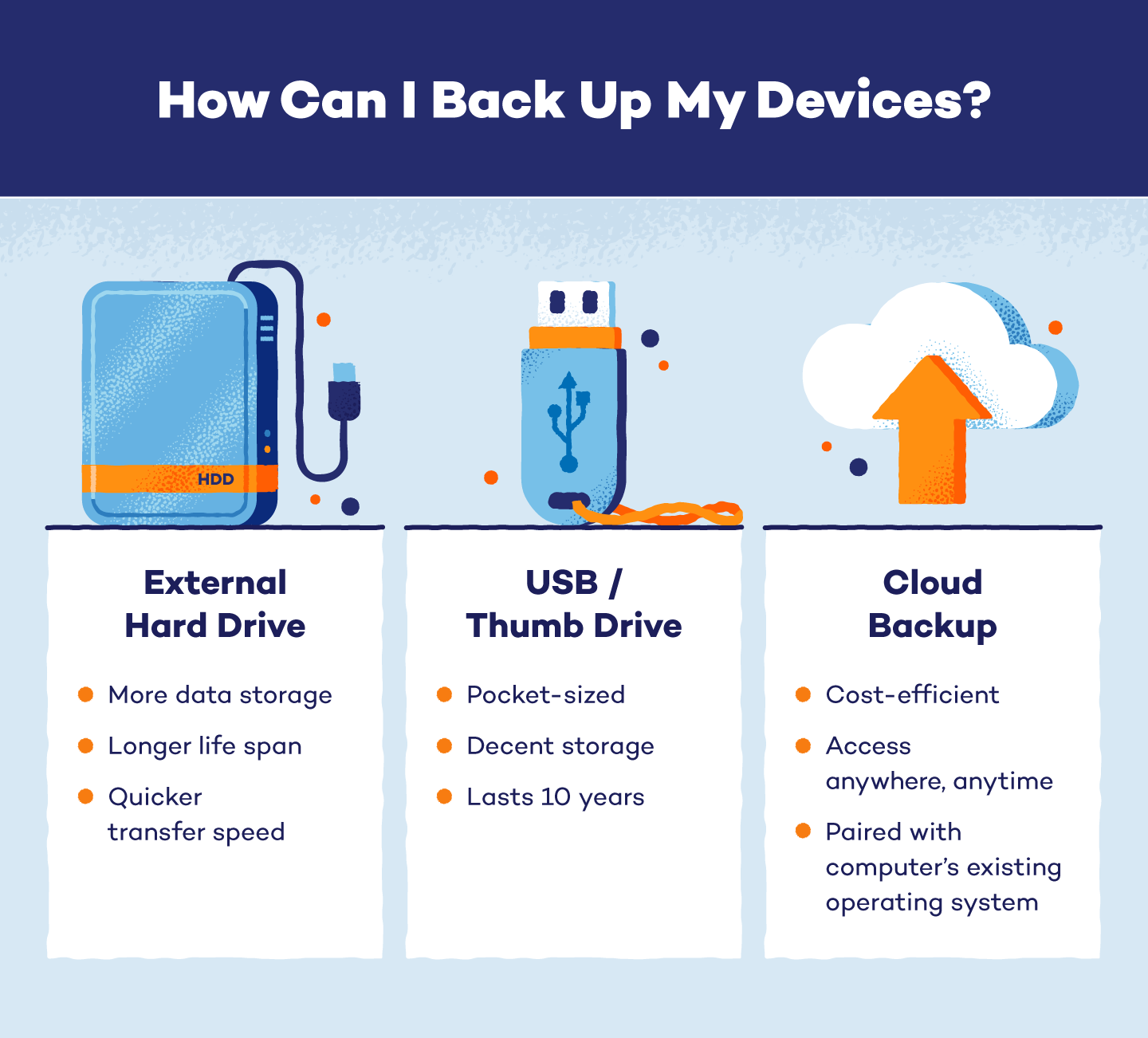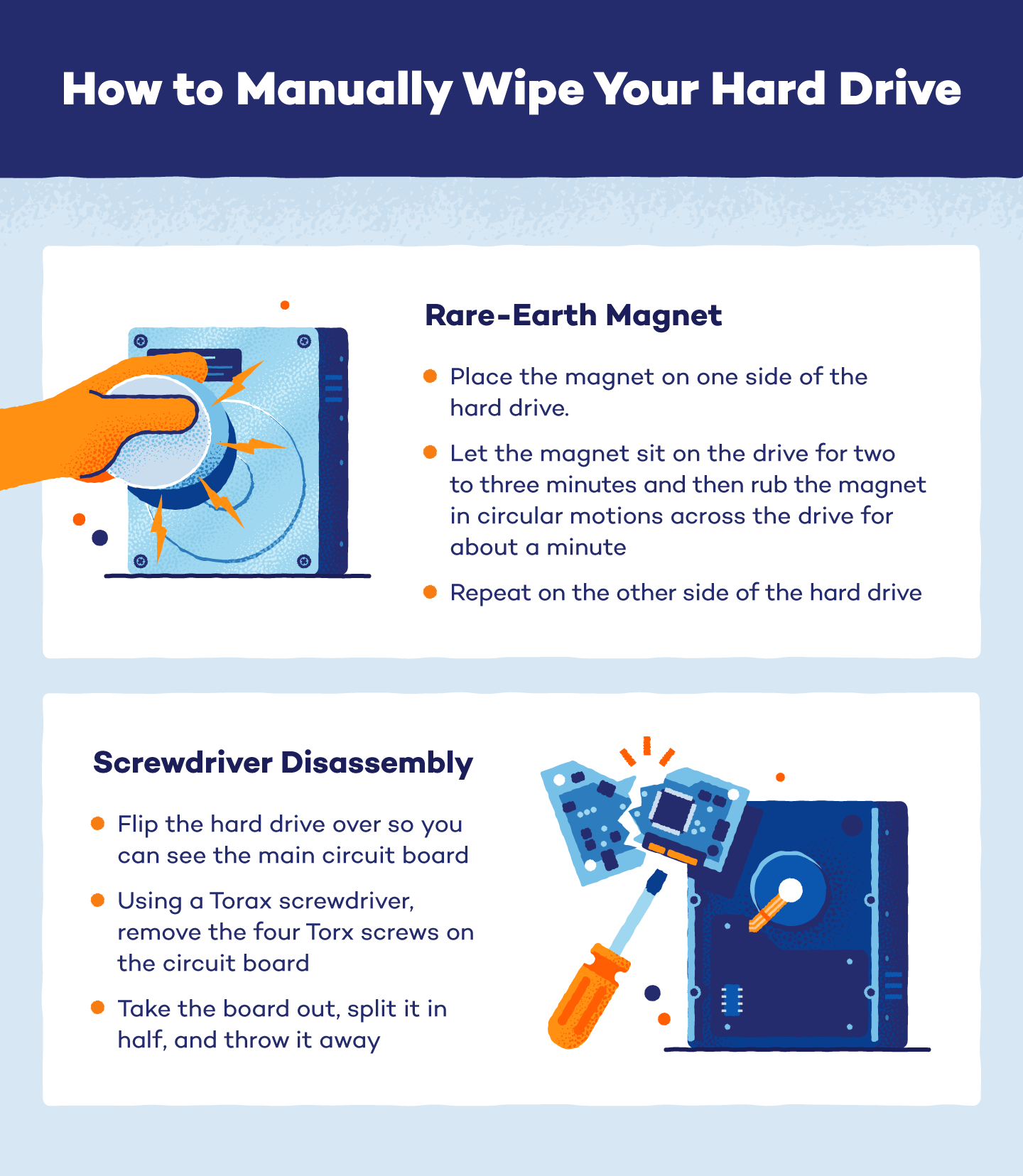
You may think that when you delete your files and move them into the trash, they’re gone forever. Well, this isn’t the case. In reality, these files are simply redistributed throughout the hard drive. Therefore, if you’re trying to learn how to wipe a hard drive, you must understand that you will need to erase all data of those once-existing files.
Your hard drive may store financial documents, personal information and anything else that once called your computer home. Typically those interested in erasing all traces of former files are getting ready to sell a computer, discarding damaged drives, upgrading or wanting a clean slate.
When selling, trading or recycling your device, it’s important to clear all data from the hard drive so that whoever gets hold of your former device can’t leak or steal any personal information. If you’re interested in protecting yourself from malware, identity theft and other risks, then read on to learn how to wipe a hard drive.
Table of Contents:
- How to Completely Wipe a Hard Drive
- How to Wipe a Hard Drive on Windows
- How to Wipe a Hard Drive on Mac
How to Completely Wipe a Hard Drive
Your personal life doesn’t need to be in the hands of anyone else except yourself. That said, when it’s time to let go of or sell your device, it’s important to ensure you’re thoroughly wiping your hard drive to reduce the risk of cybertheft or exposing personal information. You don’t have to see a tech-guru to have your hard drive wiped. Follow these simple steps on how to thoroughly wipe your hard drive.
Step 1: Hold Onto Passwords and Login Credentials
Is forgetting your password a universal phenomenon? Trying to remember passwords, especially the lengthy ones you had to create to meet a platform’s requirements, is not second nature.
When preparing to wipe a hard drive, it’s important to remember to save your passwords and login credentials. You can manually write them down for safekeeping, or you can back up a file containing all of them onto your USB or external hard drive. Doing this will prevent the stress that comes along with having to click “forgot password” every time you log in after emptying your hard drive.
Step 2: Back It Up
 It’s always sensible to routinely back up your hard drive and devices, but it’s a must when getting ready to wipe it clean.
It’s always sensible to routinely back up your hard drive and devices, but it’s a must when getting ready to wipe it clean.
Often, backing up your data is as simple as connecting your storage device to your computer and transferring files to it. You can use thumb drives or USB flash drives to back up your data. But keep in mind that these are smaller storage devices, so you might not be able to save all the information you need.
A better choice might be external hard drives, which can provide greater storage. Additionally, you can move your data to a different computer. Cloud backups are another practical choice and are often safe.
Backing up your hard drive can take anywhere from 30 minutes to several hours depending on the size of each file and the overall size of the backup. If you need to back up your computer, it’s recommended not to leave this till the last minute so that you have a sufficient amount of time for the backup to complete. If you rush a backup or skip over larger files before wiping your hard drive, those files are lost forever.
Step 3: Use a Program to Wipe Hard Drive
You can permanently erase data on your hard drive with the help of professional programs. Although the chances of retrieving erased data is slim with these applications, the good news is that no one else can recover your deleted files.
The majority of these data-destruction tools replace deleted files with zeros and other confusing information. Software for data recovery is unable to recover the files as a result.
Panda Security’s Cleanup program is an efficient and easy-to-understand program made for exactly this. Cleanup can free up space on a hard drive, monitor cookies and more. Luckily, wiping a hard drive is a common occurrence in today’s technology-driven world, so there are numerous programs that you can use to help you out.
Step 4: Manually Wipe Hard Drive Yourself
 If you’re worried that a program may have left files on the hard drive or you just want a safer guarantee, you can manually wipe your hard drive yourself. The drive can actually be erased.
If you’re worried that a program may have left files on the hard drive or you just want a safer guarantee, you can manually wipe your hard drive yourself. The drive can actually be erased.
Rare-earth magnet method:
One option that will destroy your hard drive is to use a rare-earth magnet. A rare-earth magnet is a very strong one, so a standard refrigerator magnet won’t do in this scenario.
- Remove the hard drive from your computer
- Place the magnet on one side of the hard drive and let it sit for two to three minutes
- Rub the magnet in circular motions along the drive for about one minute
- Repeat on the other side of the hard drive
This should cause irreversible damage to your hard drive, but use this method with caution as inappropriate use could result in bodily harm.
Screwdriver disassembly method:
You can also use a screwdriver to physically disassemble your drive from your computer. You can harm it using this technique in such a way that any data can only be recovered by a skilled hacker.
- Flip the hard drive over so you can see the main circuit board
- The four Torx screws on the circuit board should be removed using a Torx driver.
- Take the board out, split it in half, and throw it away.
By using this technique, you can recycle the hard drive with confidence that no one will be able to read its contents by simply connecting the drive to another PC.
How to Wipe a Hard Drive on Windows
If you own a Windows 10 or 11 computer there is a simpler way to erase your hard drive. No need for a rare-earth magnet or screwdriver — this process involves multiple steps that can all be carried out from the settings application. Follow these step-by-step instructions for your Windows 10 or 11 devices.
- Go to Settings → “System” → “Recovery”
- For Windows 10 go to “Update & Security” instead of “System”
- Find “Reset this PC” and click “Reset”
- For Windows 10 click “Get Started”
- Click “Remove Everything”
- Reinstall Windows via either prompts: “Cloud Download” or “Local Reinstall”
- Go to “Additional Settings” → “Change Settings” → “Clean Data”
- For Windows 10 toggle “Wipe the Drive” instead of “Clean Data”
- Click “Reset”
How to Wipe a Hard Drive on a Mac
Not all devices function the same way. Therefore, if you own a Mac computer follow the instructions below for wiping your hard drive clean.
- Restart your Mac
- Hold the “Command” and “R” keys while the computer restarts
- Let go when the Apple logo appears
- Click “Disk Utility” → “Continue”
- Go to “View” → “Show all Devices”
- Choose your Mac’s drive → Hit “Erase”
- Fill in “Name,” “Format,” and “Scheme”
- Name: You can name the disk anything you’d like
- Format: Choose “APFS (Apple File System)” or “Mac Os Extended (Journaled)”
- Select “Erase”
- Click “Done” when the button appears on the screen
- Reinstall OS
Whether you’re getting ready to sell or trade in your computer, wiping your hard drive is key to protecting your personal information. To make the process simple and easy, seek help from cybersecurity experts at Panda Security who can help you wipe your hard drive from the comfort of your home.
The post How to Wipe a Hard Drive in 4 Steps appeared first on Panda Security Mediacenter.
Article Link: How to Wipe a Hard Drive in 4 Steps - Panda Security